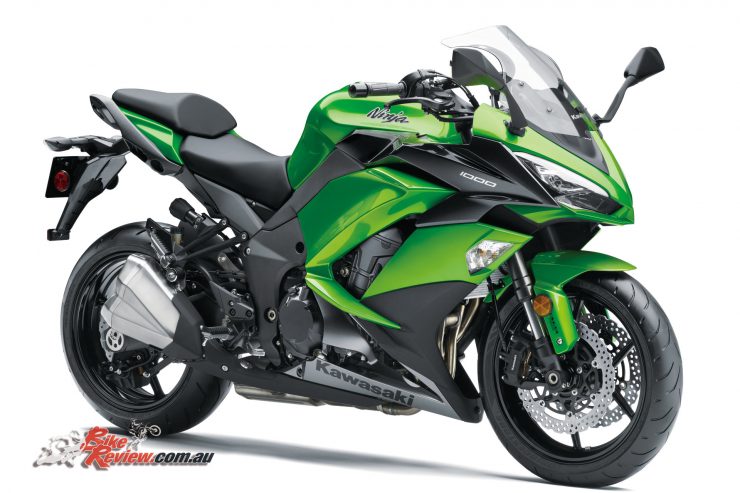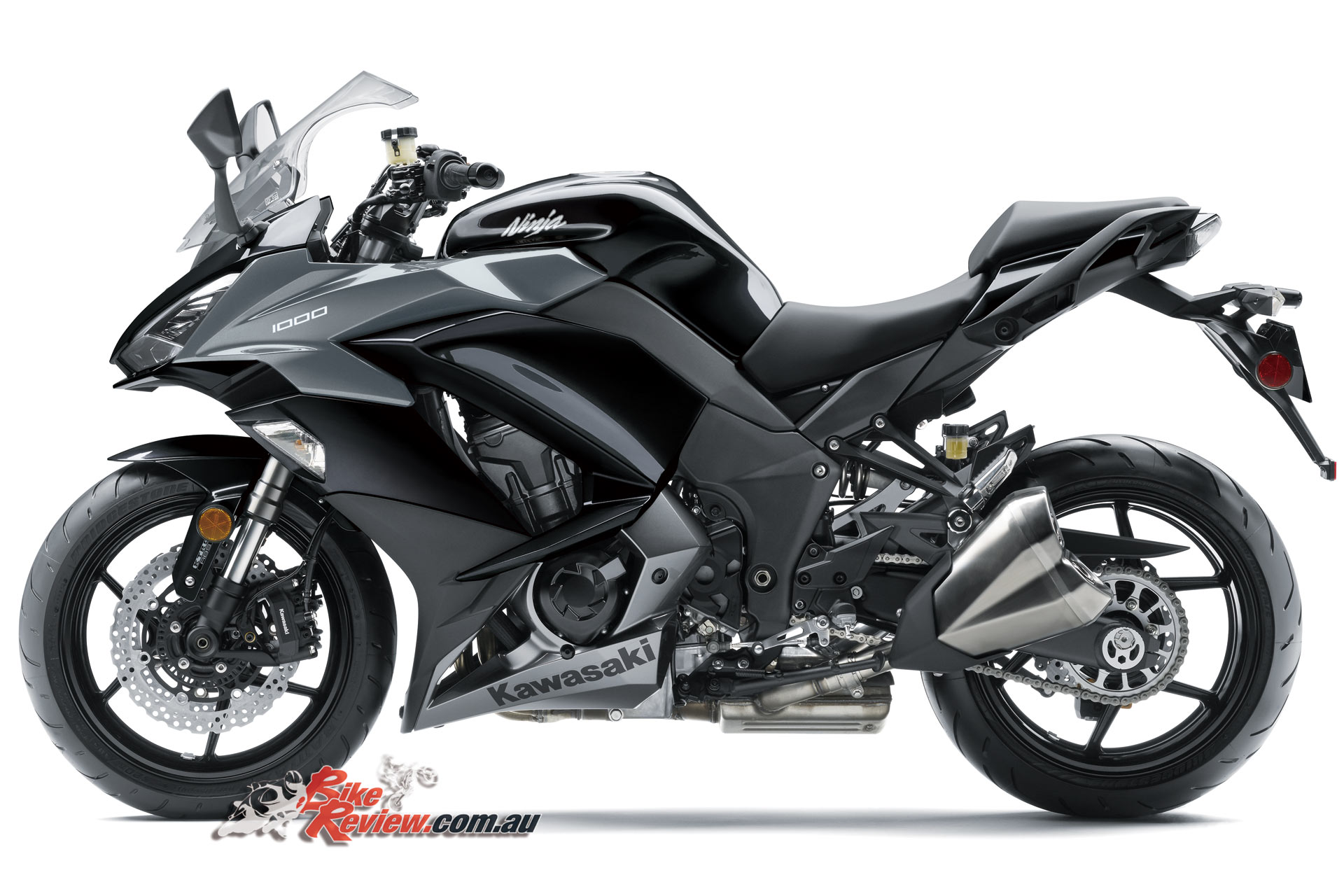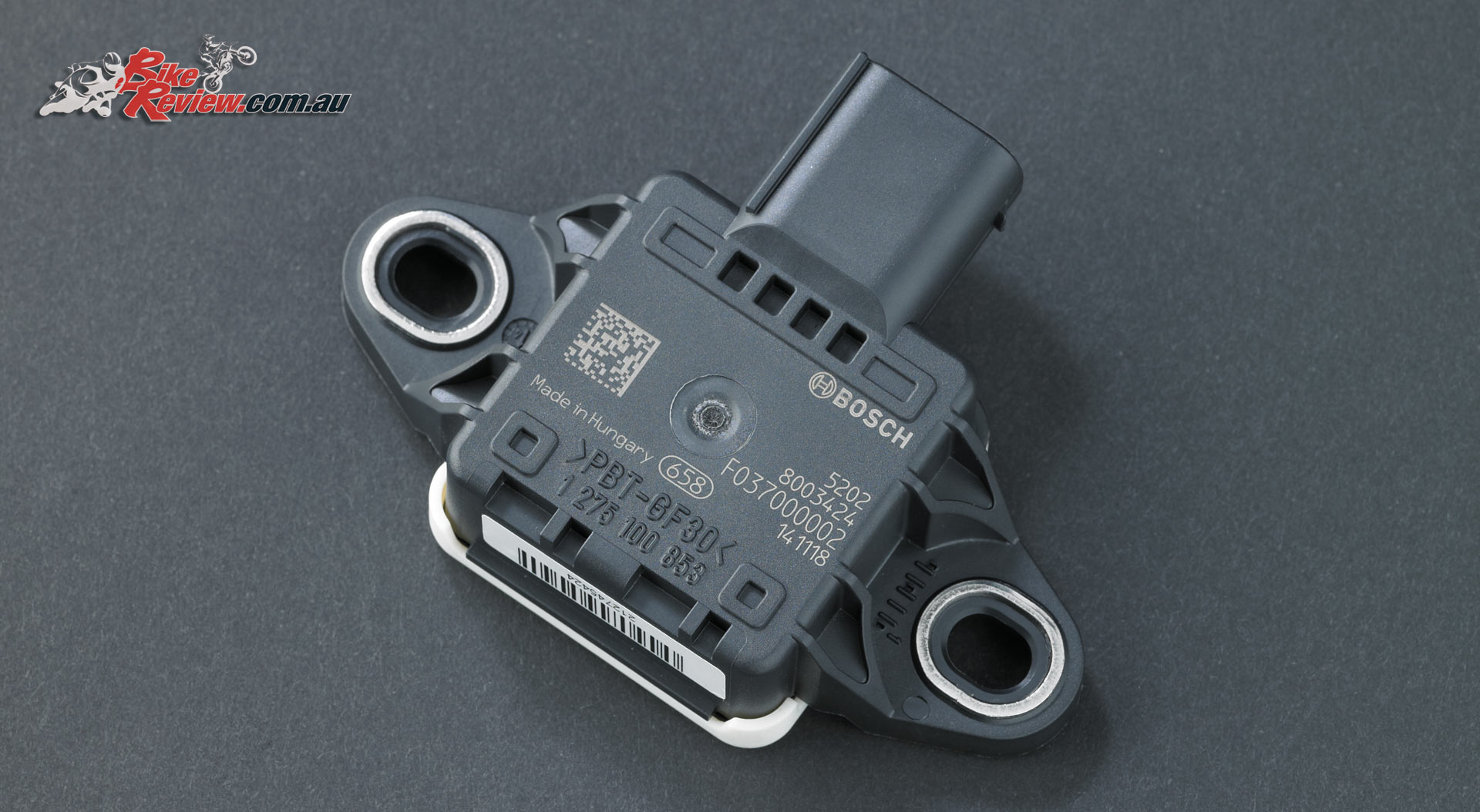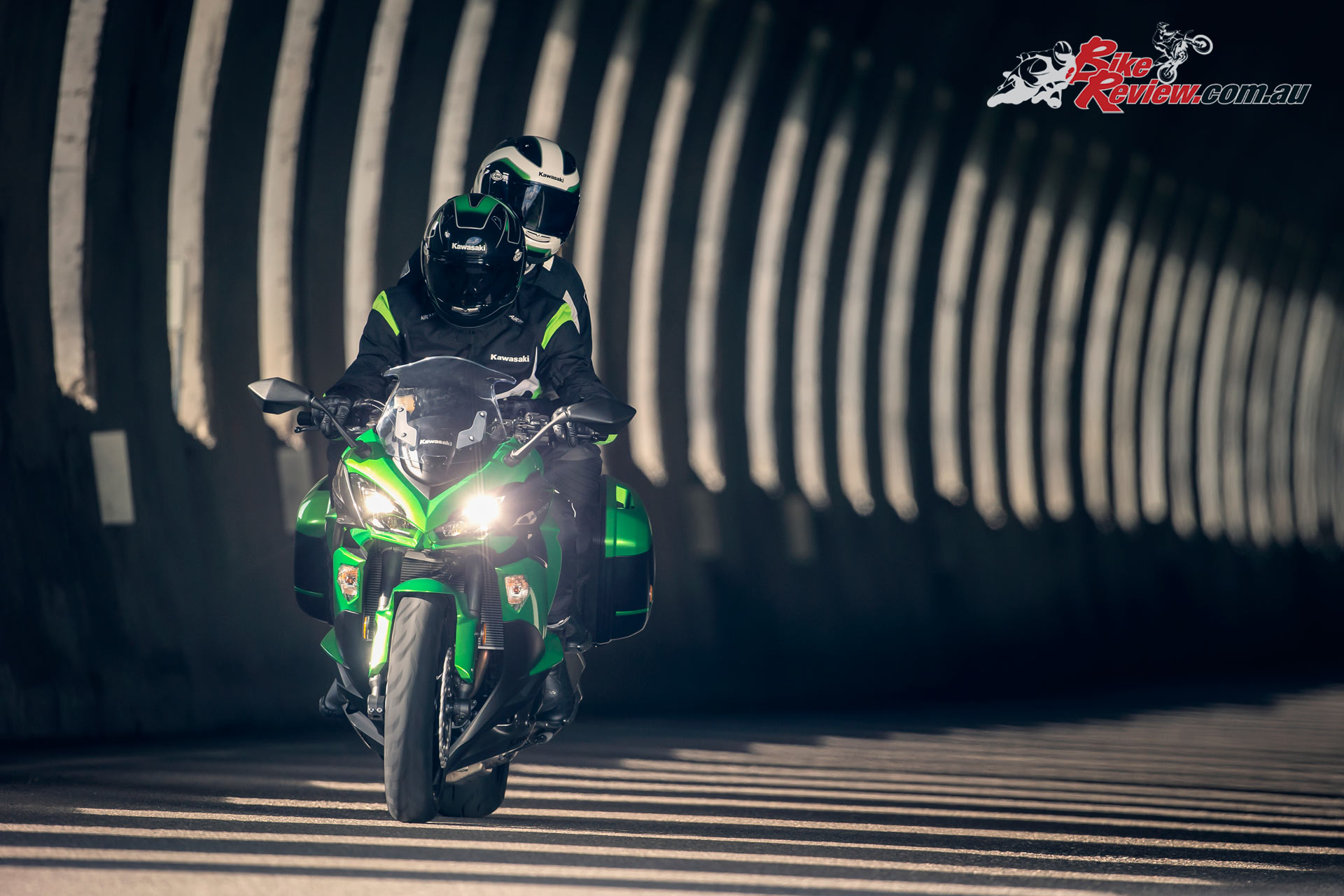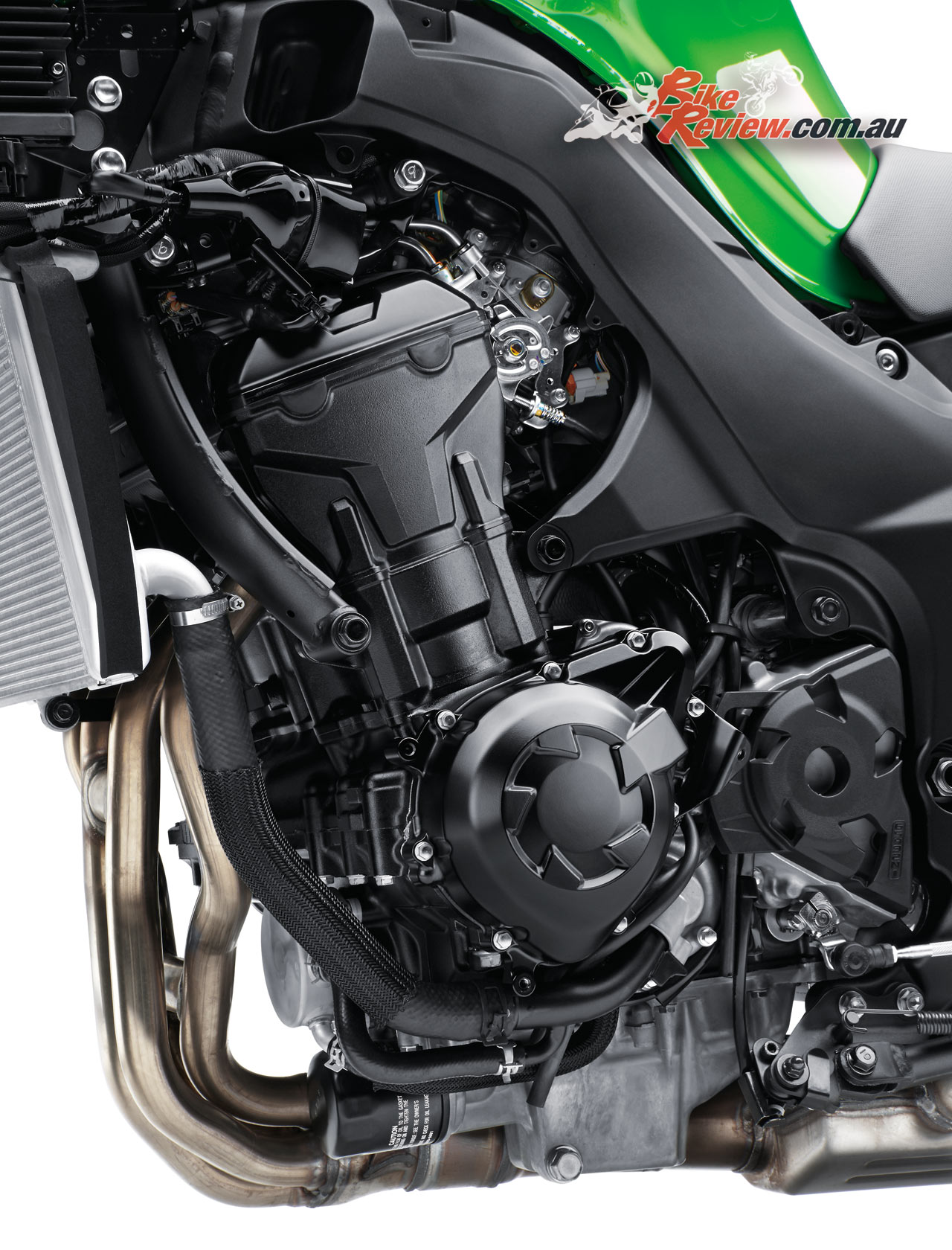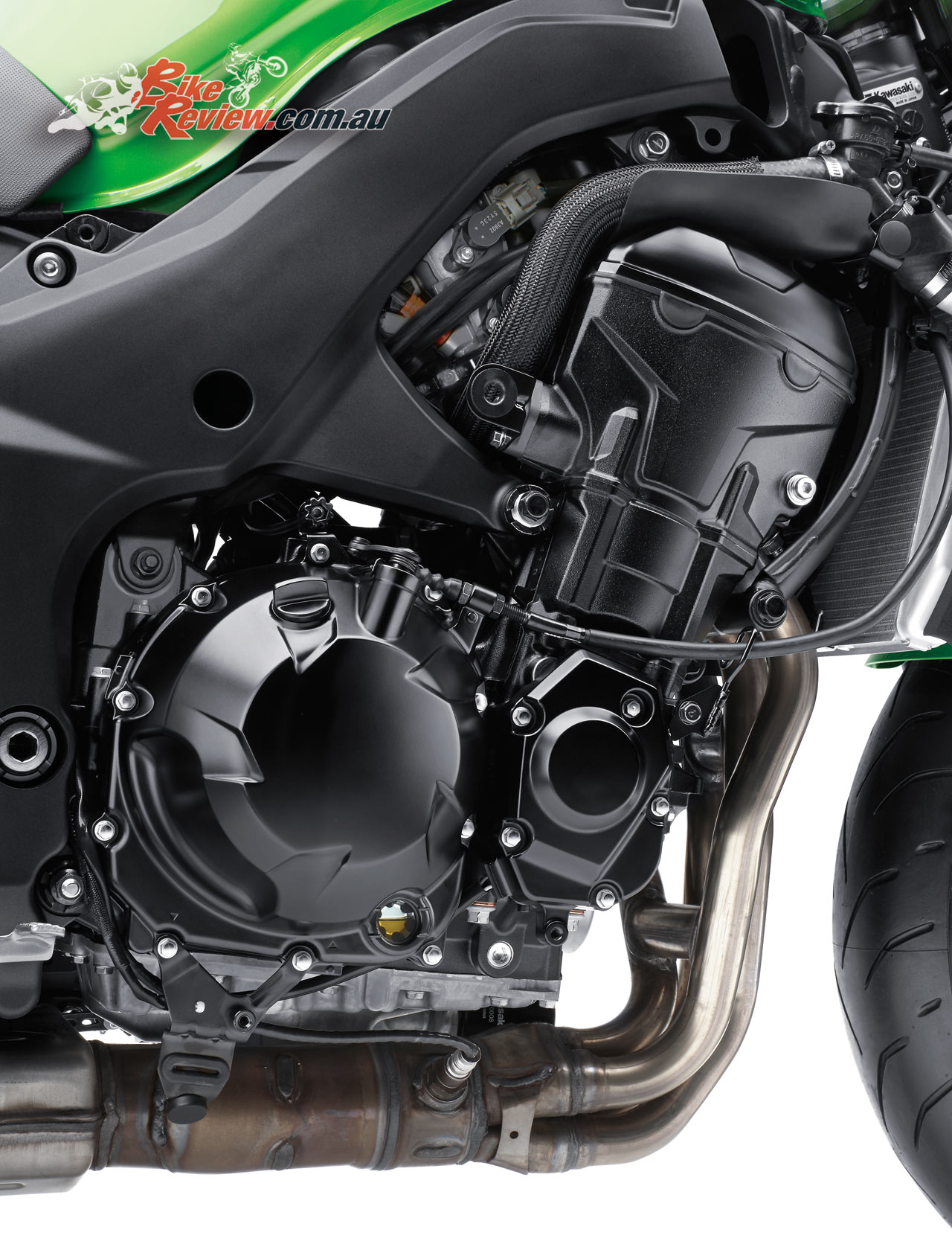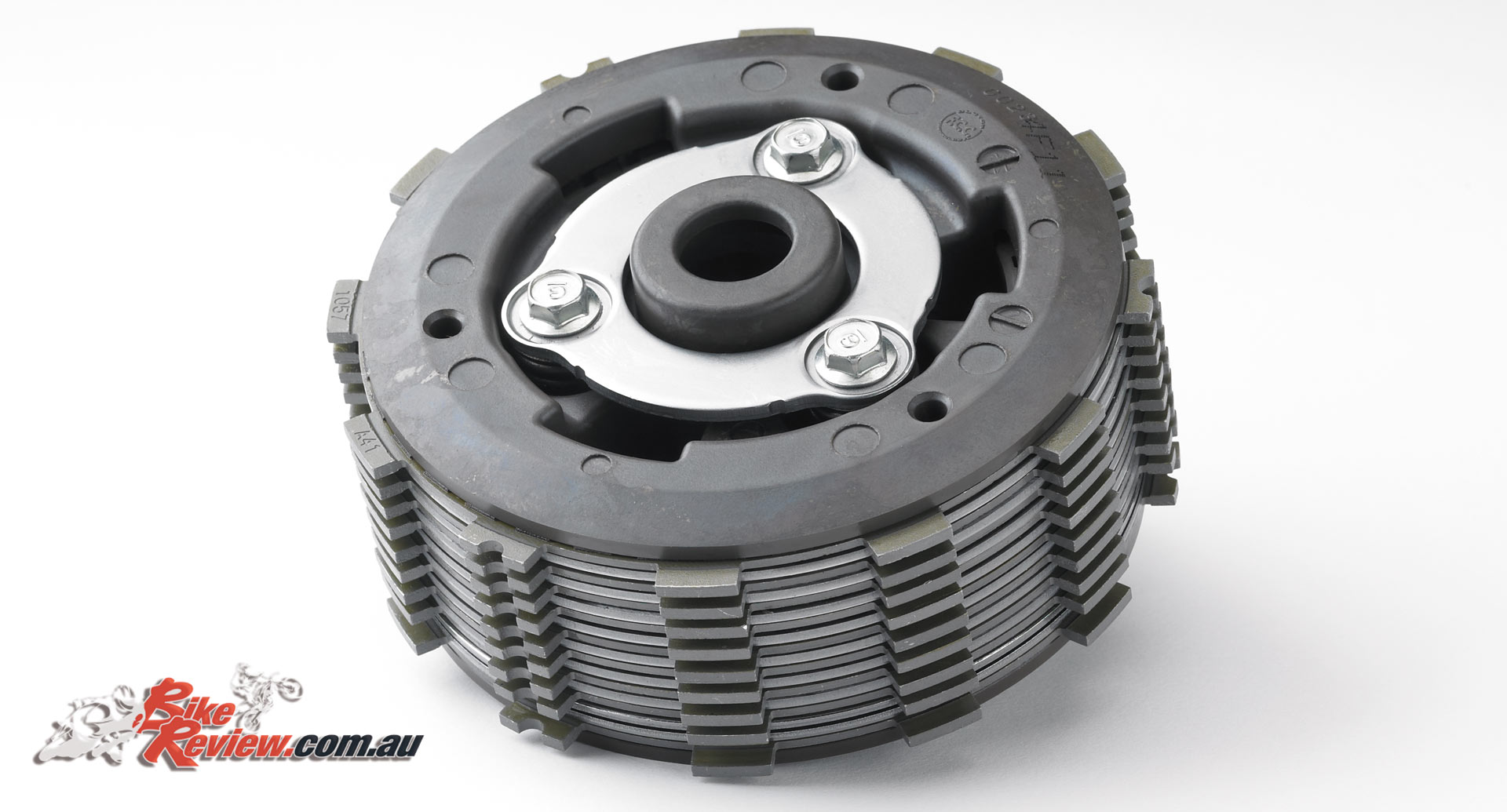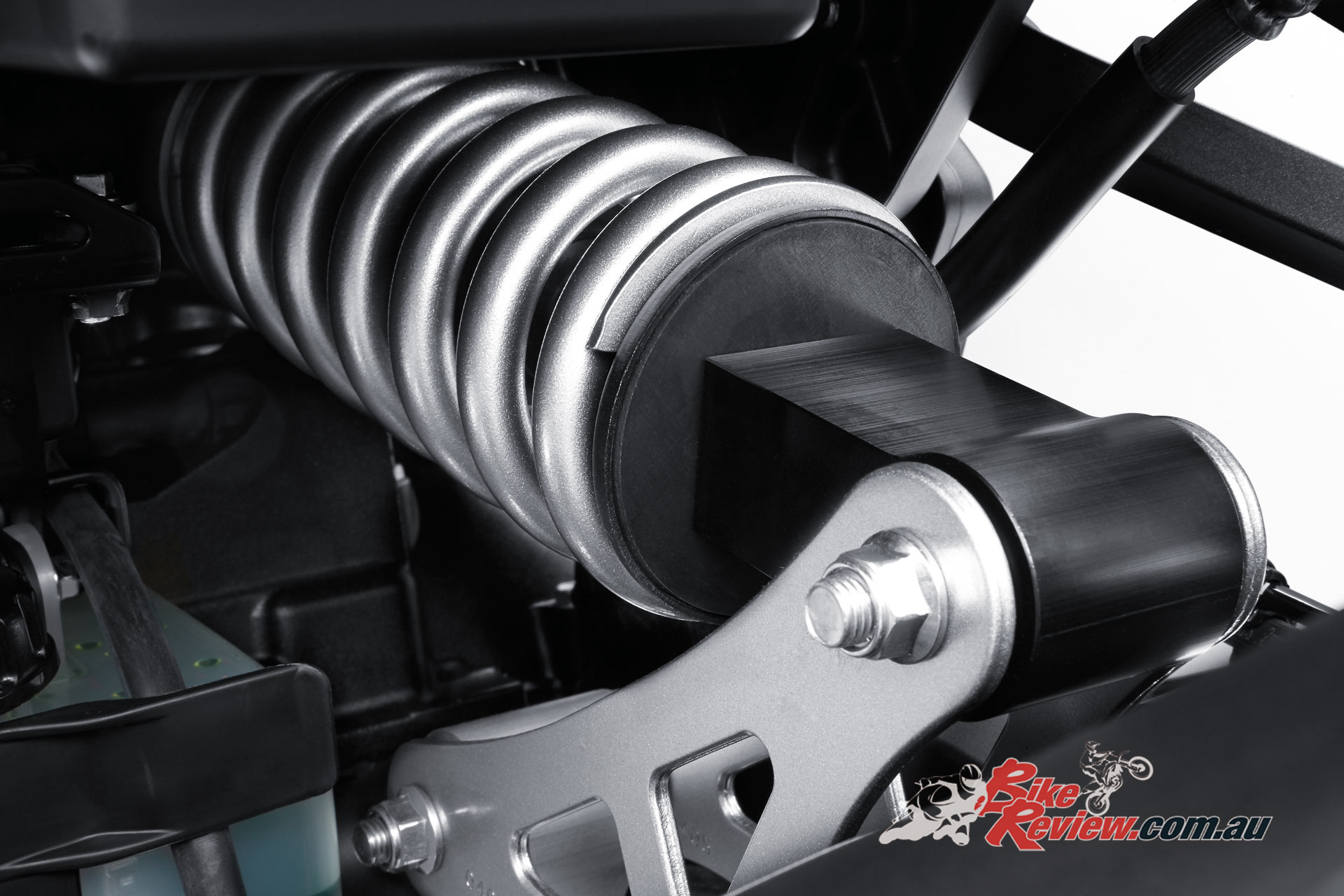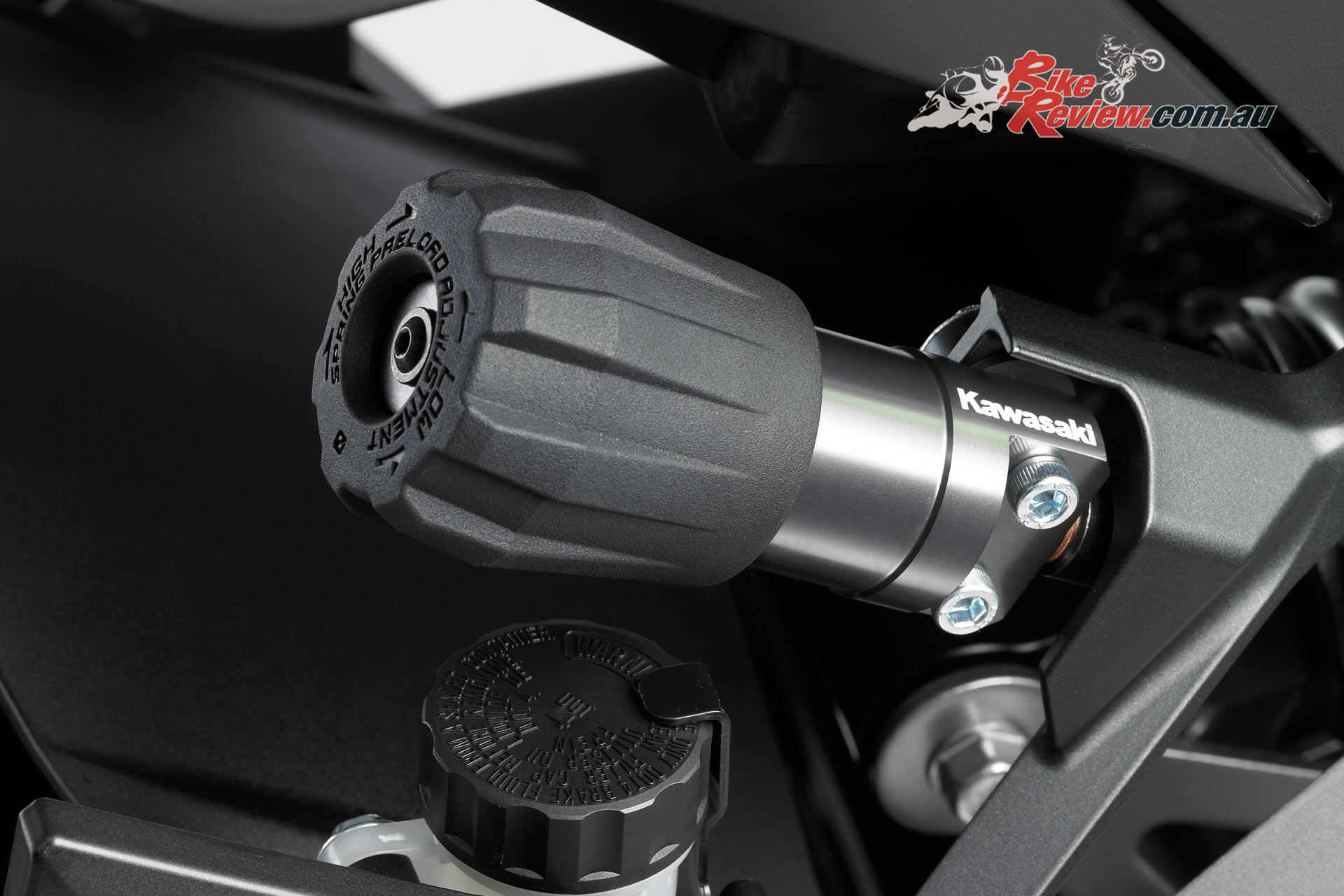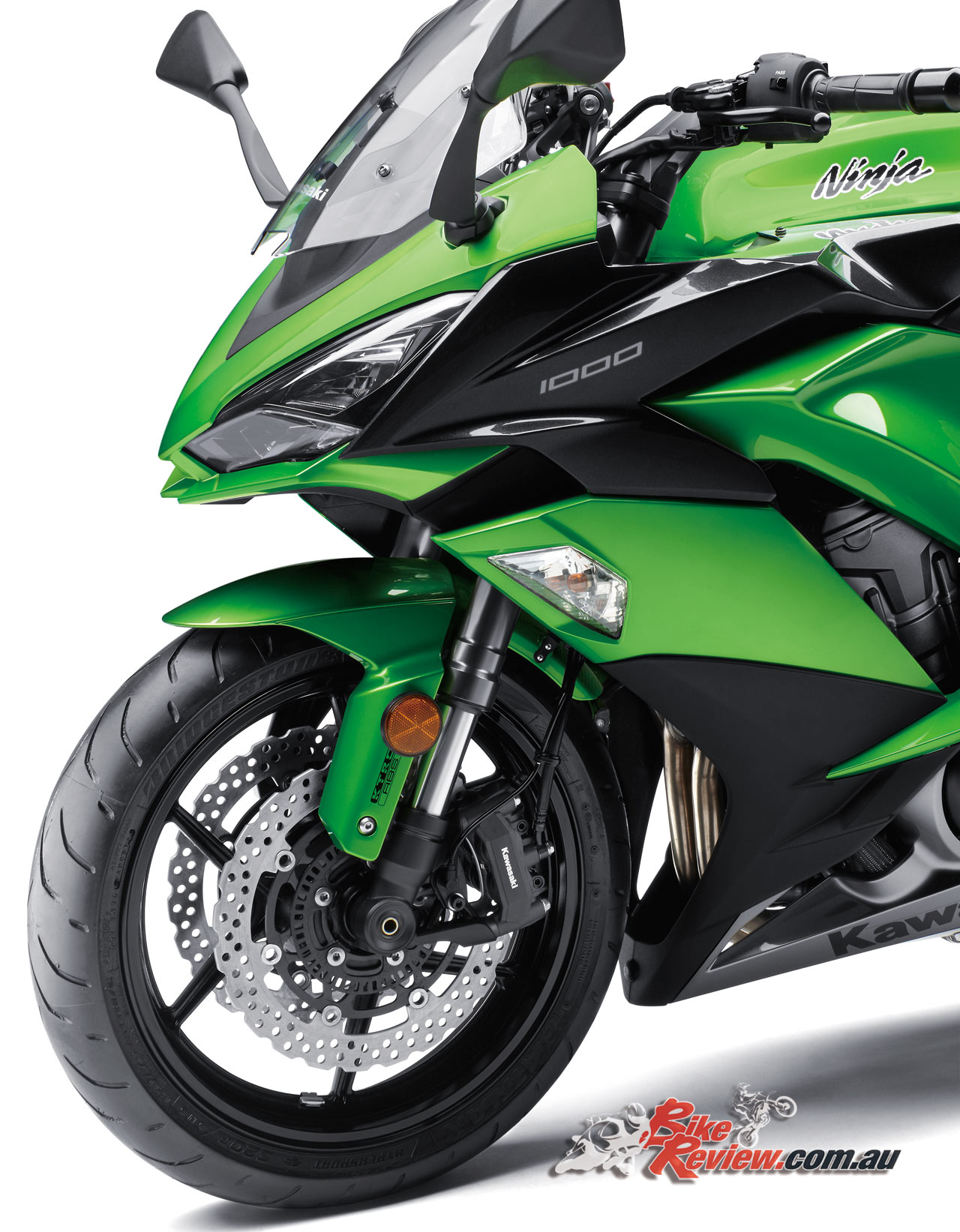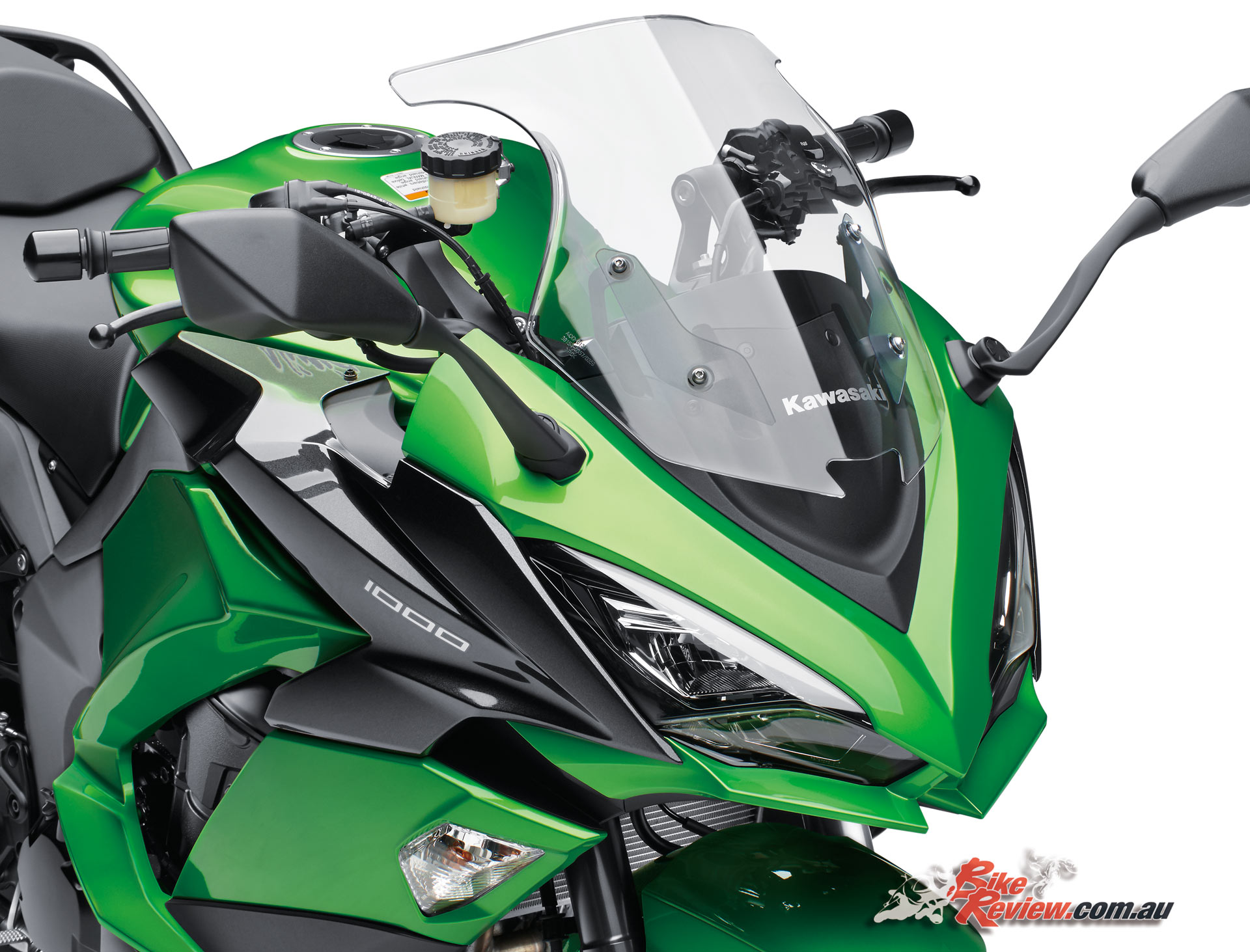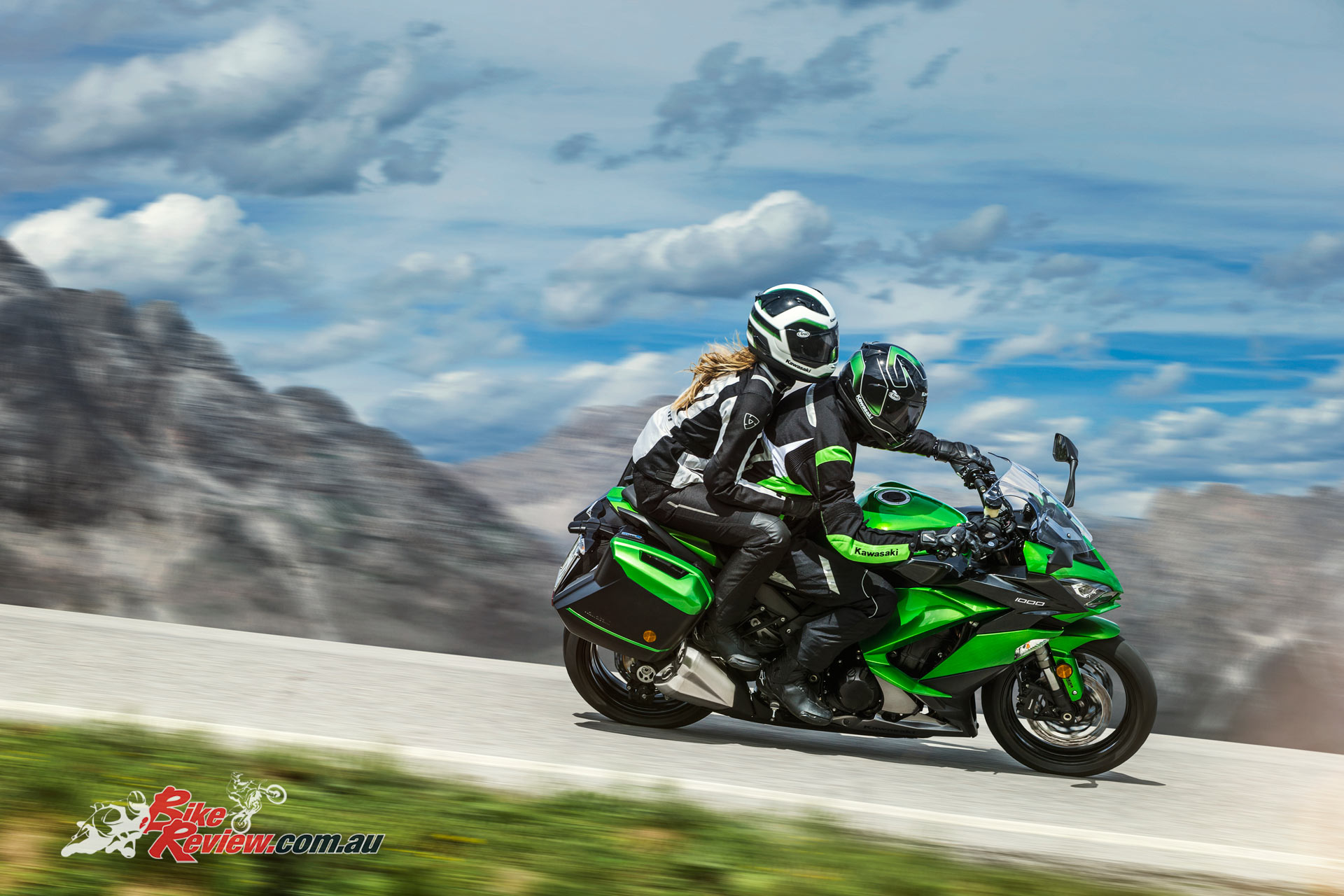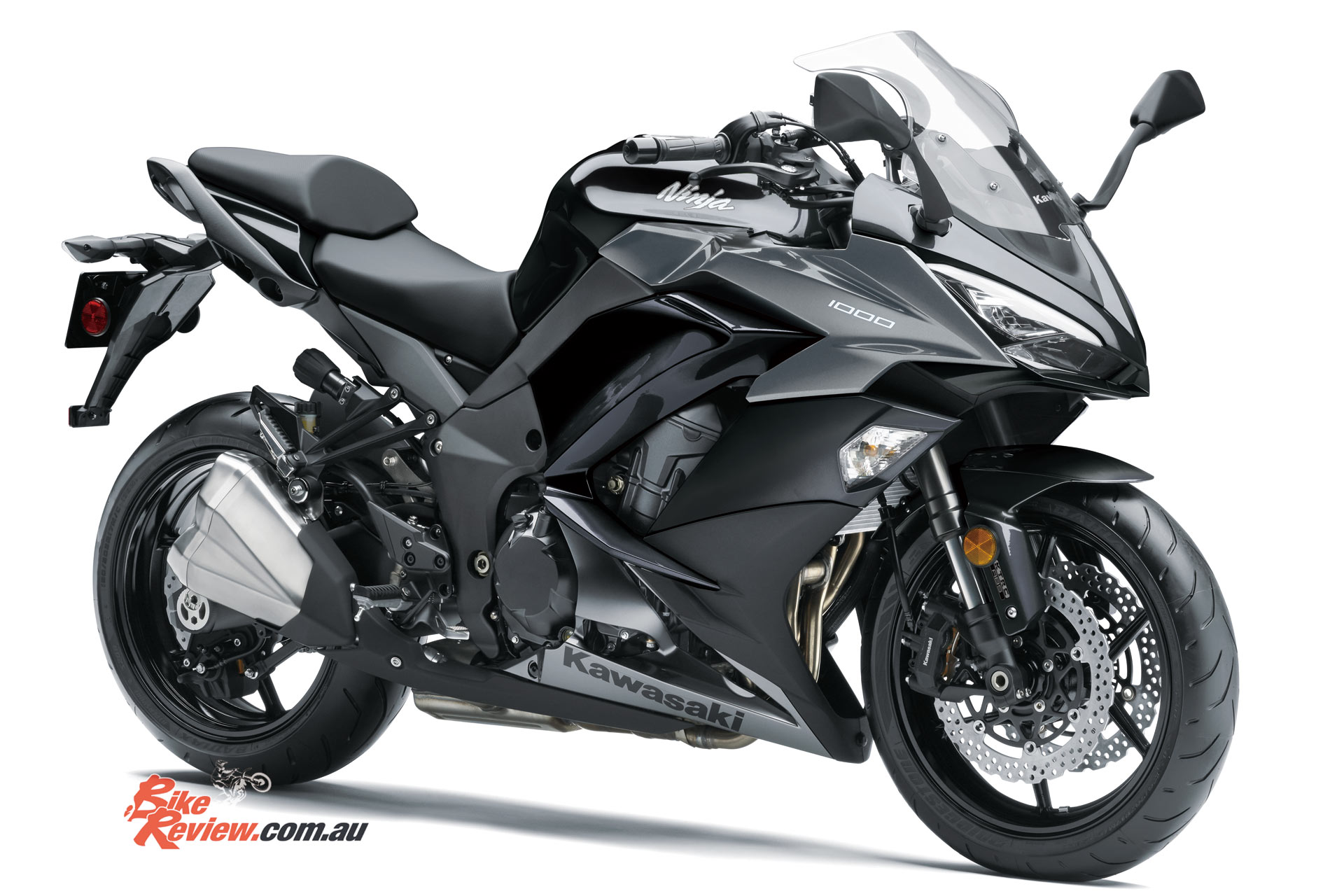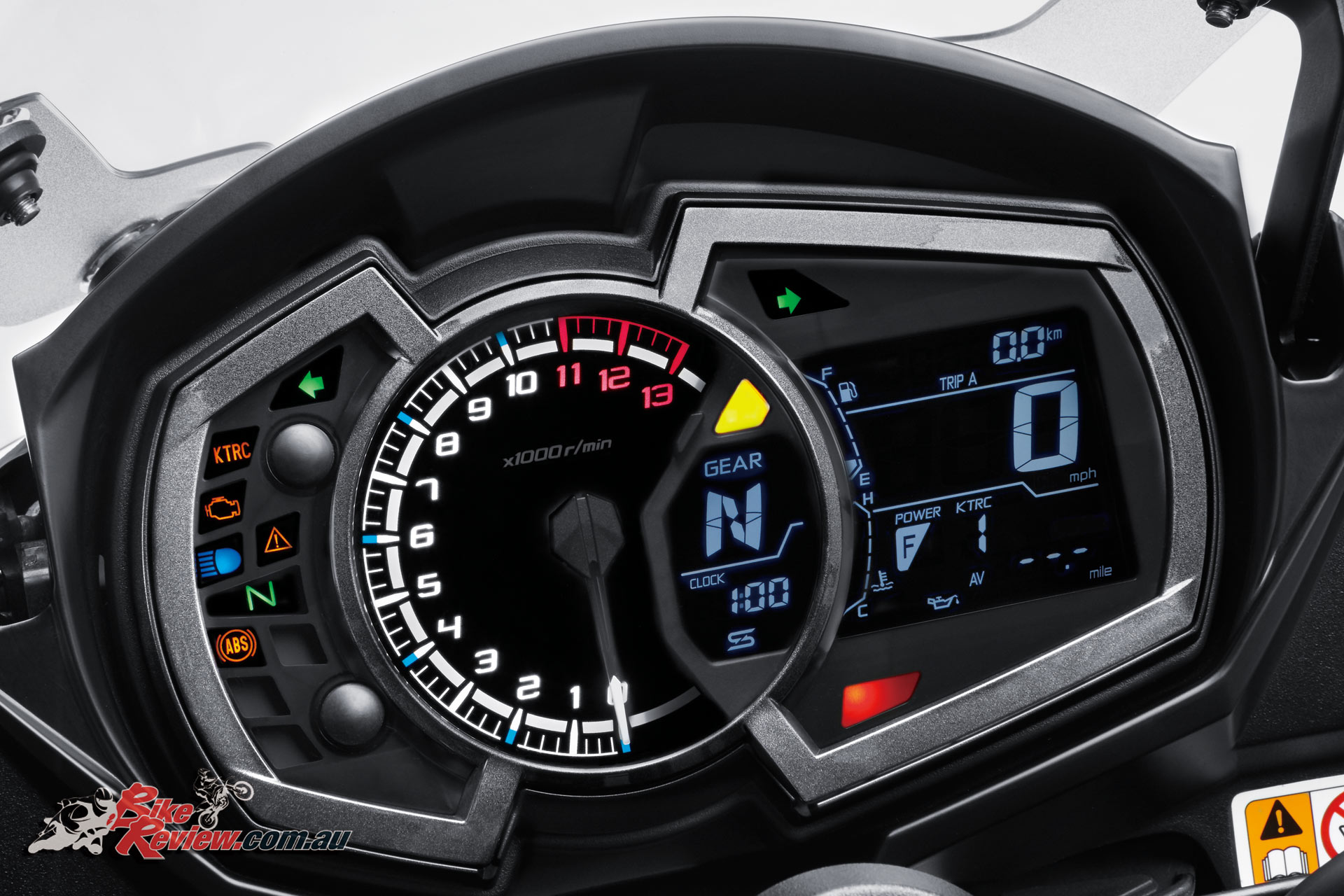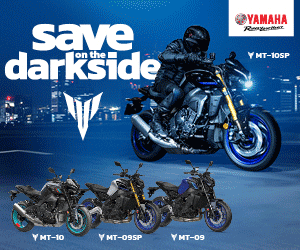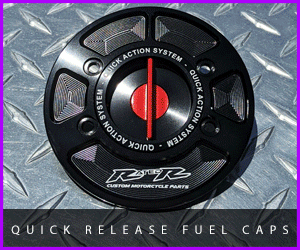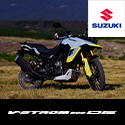2017 Kawasaki Ninja 1000 – Updated
Now in its third iteration, an even more polished Kawasaki Ninja 1000 continues to offer the comfort and convenience to enable sport riding enthusiasts to take their seductively styled machines touring.
Complementing the even smoother power delivery and extremely composed handling, the new model features increased touring performance care of improved wind protection, greater comfort and the clean-mount pannier system. All-new Ninja family styling deepens its sporty image.
Loaded with the latest electronics technology that Kawasaki has to offer, the new Ninja 1000 is even better equipped to meet a wide range of rider needs.
All-new bodywork includes a much sharper front cowl with a decidedly closer resemblance to Kawasaki’s Ninja supersport models. The more aggressive visage is complemented by fierce new LED headlamps. The dynamic and sporty bodywork reflects the Ninja 1000’s exciting street riding potential.
A powerful 1043cc liquid-cooled, four-stroke In-line four engine pulls strongly from all rpm and does not let up before the redline. Adding to rider exhilaration, the engine delivers superb response, a strong mid-range hit and an intoxicating intake howl. Revised engine settings offer even smoother power delivery, facilitating control and contributing to rider comfort and confidence.
The Ninja 1000’s highly rigid aluminium frame offers a high degree of mass centralisation, ensuring a balance of sharp turning and firm handling. The bike responds quickly to rider input, while offering an excellent ability to soak up bumps and ruts. Highly composed, the Ninja 1000’s superb straight-line and cornering stability makes it easy to spend long hours in the saddle.
A number of supersport-style components contribute to the Ninja 1000’s sport riding potential. An inverted front fork and horizontal back-link rear suspension are complemented by a supersport-style brake package, including triple petal discs, radial-mount monobloc calipers and radial-pump front brake master cylinder.
An upright riding position, manageable power delivery, and surefooted handling offer the versatility for daily riding, while increased touring performance and numerous accessories make it even easier to accommodate a passenger and luggage on weekend trips.
Two-piece fairings are wider, offering increased wind protection for the rider’s legs. A new, taller double-bubble windshield also contributes to the increased wind protection. As before, the windshield is adjustable by hand (without tools), with three available positions to suit rider preference.
In addition to contributing to the Ninja 1000’s sharper looks, dual LED headlamps (each featuring low and high beams, as well as a LED position lamp) offer significantly increased brightness, casting their light wider and farther forward.
All-new sophisticated instrument design features a large analogue tachometer flanked by warning lamps on one side, and a gear position indicator and multi-function LCD screen on the other.
Both rider and passenger seats deliver increased comfort. The redesigned rider seat has a wider seat area, offering greater support, and enabling longer riding stretches. A longer passenger seat with thicker padding features a design that swells at the front to help keep tandem riders from sliding forward, all contributing to increased passenger comfort.
The mounting system (now standard) for the accessory panniers allows the panniers to be attached and removed very simply, contributing to increased convenience. Seamlessly integrating the panniers with the rear of the bike, the clean-mount system positions the accessory panniers close to the bike centreline, and, thanks to its clean clutter-free design, ensures the rear of the bike still looks good with the panniers removed.
Contributing to the Ninja 1000’s touring performance, a number of Kawasaki genuine accessories are available: GIVI panniers (28 litres), larger GIVI top case (47 litres), ERGO-FIT low seat, grip heaters, DC outlet, various sliders, etc.
2017 Kawasaki Ninja 1000 Electronics
The Ninja 1000 is equipped with KCMF (Kawasaki Cornering Management Function), Kawasaki’s latest IMU-enhanced electronics package.
Using the latest evolution of Kawasaki’s advanced modelling software and feedback from a compact Bosch IMU (Inertial Measurement Unit) that gives an even clearer real-time picture of chassis orientation, KCMF monitors engine and chassis parameters throughout the corner – from entry, through the apex, tocorner exit – modulating brake force and engine power to facilitate smooth transition from acceleration to braking and back again, and to assist riders in tracing their intended line through the corner. On the Ninja 1000, KCMF oversees the following systems:
- KTRC (including traction and wheelie control)
- KIBS (including pitching and corner braking control)
Three Traction Control modes cover a wide range of riding conditions, offering either enhanced sport riding performance or the peace of mind to negotiate slippery surfaces with confidence. Feedback from the IMU enables more precise control.
A choice of Full Power or Low Power mode also allows riders to set power delivery to suit preference and conditions.
With the addition of the IMU, wheelie control is more precise. In addition to smoother operation, the system limits wheelies to a level optimised for street-use taking into account the potential weight of a passenger and luggage.
Kawasaki’s supersport-grade high-precision brake management system is standard equipment on the 2017 Ninja 1000. This is the same base system used on the Ninja H2 and Ninja ZX-10R, with programming and settings revised to suit the performance parameters of the Ninja 1000.
KIBS is a multi-sensing system, using the input from numerous sources. In addition to front and rear wheel speed sensors (standard for any ABS system), KIBS also monitors front caliper hydraulic pressure and various information from the engine ECU (throttle position, engine speed, clutch actuation and gear position).
Supersport models pitch more than most motorcycles, so there is a greater tendency for the rear to lift under hard braking. By monitoring front caliper hydraulic pressure, KIBS is able to regulate pressure increases, reducing the tendency of the rear to lift.
This happens in two situations: 1) Before conditions require ABS intervention, KIBS prevents the pressure from increasing too quickly, thus suppressing rear lift, and 2) after ABS has decreased pressure to prevent wheel lock, KIBS pressure is not returned too quickly, preventing a sudden increase that could induce rear lift. Suppressing this tendency contributes to enhanced braking stability.
2017 Kawasaki Ninja 1000 Engine
Engine tuning focused on the feeling the rider gets when opening the throttle. Strong torque is complemented by direct throttle response. Revised engine settings offer even smoother power delivery and cleaner emissions.
The liquid-cooled, DOHC, 16-valve 1043cc in-line four offers impressive power with 105.0kW (143hp) and strong torque.
Revised ECU settings contribute to even smoother power delivery, facilitating control and contributing to rider comfort and confidence, and deliver cleaner emissions, ensuring various market regulations (including Euro 4) are cleared.
Designed specifically so that acceleration could be enjoyed aurally as well as physically, the carefully crafted auditory note of the intake is a key component of the street riding exhilaration offered by the Ninja 1000. A resonator inside the airbox reduces noise at low rpm, and enhances intake sound at high rpm.
The exhaust system features a 4-into-2-pre-chamber-into-2 layout. Silencer end-caps create a quad-style image.
With the airbox nestled between the frame beams, intake air can be affected by engine heat. The Cool Air system routes cool air to the airbox from ducts at the front of the side fairings, minimising performance loss due to heated intake air. This should not be confused with Ram Air, where force-fed air becomes pressurised in the airbox.
The Assist & Slipper Clutch was developed based on feedback from racing activities. The clutch uses two types of cams (an assist cam and a slipper cam), offering two new functions not available on a standard clutch.
When the engine is operating at normal rpm the assist cam functions as a self-servo mechanism, pulling the clutch hub and operating plate together to compress the clutch plates. This allows the total clutch spring load to be reduced, resulting in a lighter clutch lever pull when operating the clutch.
When excessive engine braking occurs – as a result of quick downshifts (or an accidental downshift) – the slipper cam comes into play, forcing the clutch hub and operating plate apart. This relieves pressure on the clutch plates to reduce back-torque and help prevent the rear tyre from hopping and skidding.
2017 Kawasaki Ninja 1000 Chassis
The aluminium twin-tube frame design features frame beams that go over engine, allowing a narrow construction that is easy to grip with the knees. Lightweight and highly rigid, the frame uses the engine as a stressed member. The frame contributes to handling, offering a firm, planted feeling, good stability and light, nimble turning.
The frame is a 5-piece cast aluminium construction, consisting of steering stem, left and right main frames, and two cross pieces. The two main frame components have open C-shaped cross sections and were die-cast to ensure a smooth surface finish.
The rear frame is a 3-piece aluminium die-cast construction. Its light weight contributes to mass centralisation.
The result is light, sharp handling. Turn-in is light. Steering is neutral after the bike has been leaned over.
2017 Kawasaki Ninja 1000 Suspension
The Ninja 1000’s suspension settings allow the bike to respond quickly to rider input while soaking up bumps and ruts, with 41mm inverted front fork featuring stepless compression and rebound damping and spring preload adjustability.
Rear suspension positions the shock unit and linkage above the swingarm. The suspension is also located far enough from the exhaust that operation is not affected by heat and features rebound and preload adjustability, with a remote preload adjuster facilitating setting changes to suit tandem riding, luggage or rider preference.
A revised shock settings and linkage ratio offer suppler suspension action for improved bump absorption and firmer cushioning. The new linkage also results in a lower seat height (820mm to 815mm).
2017 Kawasaki Ninja 1000 Brakes
At the front, 300 mm petal brake discs are gripped by opposed 4-piston radial-mount monobloc calipers with differentiated diameter pistons: 32mm (upper) and 30mm (lower). The machined monobloc calipers feature an alumite coating and are laser-etched with a Kawasaki logo, adding to the bike’s high-quality sporty looks.
The radial-pump front brake master cylinder also contributes to the superb control and feel offered by the calipers.
The rear brake features a single piston, pin-slide caliper gripping a 250 mm petal disc. Revised rear brake pad material and pedal optimised return spring offer improved control and increased overall performance. The caliper is mounted below the swingarm and features a torque rod. The arrangement adds to the racy image.
2017 Kawasaki Ninja 1000 Wind Protection
A new double-bubble windshield is 15 mm taller at the centre, contributing to the increased wind protection. The windshield has three available positions ranging from sporty to maximum wind protection, to suit rider preference.
Adjustment can be done by hand (no tools required) by depressing the release button below the instrument panel. Windshield adjustment should be done with the bike stopped.
Two-piece fairings are wider by up to 28 mm wider each side, offering increased wind protection for the rider’s legs.
2017 Kawasaki Ninja 1000 Ergonomics
A number if ergonomic features are also included such as five-way adjustable clutch lever can be set to suit the size of the rider’s hands, contributing to rider comfort. Mirrors are now positioned 20 mm farther outward and
Both rider and passenger seats deliver increased comfort. The redesigned rider seat has a wider seat area, offering greater support, and enabling longer stretches at time without having to stop due to discomfort. The passenger seat is longer (+25 mm), with 3 mm thicker urethane padding and a design that swells at the front (25 mm thicker) to help keep tandem riders from sliding forward, all contributing to increased passenger comfort. Dampers on the underside of the seat help reduce vibration.
Ergonomically sculpted passenger grips are easy to hold and are naturally positioned, contributing to passenger comfort.
The fairing design also covers part of the frame, contributing to a good ergonomic fit and helping to protect the rider from engine heat for added comfort.
Front footpegs are rubber-mounted to reduce vibration transmitted to the rider. Further, vibration-absorbing weights on the back of the foot guards minimise fluttering of the floating pieces.
Now that the standard tandem grips are compatible with the clean-mount system, mounting the accessory panniers is as simple as sliding them onto the slots on the grips and the pannier supports integrated into tandem footpeg stays. (Installing accessory tandem grips is no longer required.)
2017 Kawasaki Ninja 1000 Styling
Chin spoilers similar to those on the Ninja H2 and Ninja ZX-10R strengthen the resemblance and sharp, compact design of the LED headlamps contributes to the Ninja 1000’s fierce expression.
Front turn signals are also built into to the fairings. Their more compact design contributes to the Ninja 1000’s sportier image.
Supersport-style front fender contributes to both aerodynamics and racy look and is joined by slim and compact tail cowl design moves mass both physically and visually away from the rear and toward the front. More compact rear turn signals also contribute to the bike’s sporty looks.
The swingarm features eccentric axle adjusters, contributing to the Ninja 1000’s Kawasaki identity and the LED taillight with red LED bulbs and a smoked lens adds a touch of class to the tail cowl.
2017 Kawasaki Ninja 1000 New Dash
All-new instrument panel layout features a large analogue tachometer flanked by warning lamps on one side, and a gear position indicator and multi-function LCD screen on the other.
Complementing a new shift-up indicator lamp, the tachometer’s needle changes colour from white to pink to red to indicate the rider-selectable shift-up timing. During normal operation the shift indicator lamp is off, and the tachometer needle is white.
When engine speed is within 500rpm of the selected shift-up timing, the shift indicator lamp flashes, and the tachometer needle turns pink. When the chosen engine speed is reached, the shift indicator lamp flashes rapidly, and the tachometer needle turns red.
Riders can set the shift-up timing between 5,000 and 11,000rpm in 250rpm increments. The shift indicator function may also be turned OFF.
In addition to the digital speedometer and gear position indicator (new for 2017), display functions include: odometer, dual trip meters, remaining range, current and average fuel consumption, external temperature (new for 2017), coolant temperature, clock and the Economical Riding Indicator. Other new features include indicators for the IMU and KIBS.

